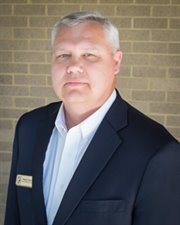| The Geospatial Technology Competency Model (GTCM) has become an important resource for defining the geospatial industry and a valuable tool for educators creating programs since its finalization in 2010. The GTCM defines the key knowledge and skills included within the domain of geospatial technology. The University of Southern Mississippi’s Geospatial Workforce Development Center conducted an initial effort in the early 2000s to define skills and competencies. This effort led to the first draft of the GTCM. This draft GTCM was reviewed by the Spatial Technologies Information Association with broad competency definitions. Work continued under the direction of the Geographic Information Technology Association (GITA), the Association of American Geographers (AAG), and the Wharton School of Business at the University of Pennsylvania (DiBiase, et al., 2010, p.56)‡ but it remained a draft. In early 2009 members of the National Geospatial Technology Center of Excellence (GeoTech Center) became involved in the effort to complete the GTCM. A broad-based panel of geospatial experts was convened and suggested that shared industry-wide competencies become Tier 4, and industry-sector competencies become Tier 5. Public comments were sought, and comments were addressed with a final GTCM draft submitted to the US Department of Labor’s Employment and Training Administration’s (DOLETA) Geospatial Technology Competency Model. The draft was approved by DOLETA in 2010. The industry has continued to evolve and grow, and the GeoTech Center has undertaken the work to update the 2010 version of the GTCM. Partnering with DOLETA, the GeoTech Center updated the GTCM in 2014 and 2018. The USDOL prefers that competency models are updated every four (4) years. The document below is the 2022 update of the GTCM. The GTCM update is focused on Tiers 1-5 as defined below: |
Industry-Related Technical Competencies
- Tier 5 -- Industry-Specific Technical Competencies
- Tier 4 -- Industry-Wide Technical Competencies
Foundational Competencies
- Tier 3 -- Workplace Competencies
- Tier 2 -- Academic Competencies
- Tier 1 -- Personal Effectiveness
‡ DiBiase, David, Corbin, Tripp, Fox, Thomas, Francica, Joe, Green, Kass, Jackson, Janet, Jeffress, Gary, Jones, Brian, Jones, Brent, Mennis, Jeremy, Schuckman, Karen, Smith, Cy, and Van Sickle, Jan. 2010. The new geospatial technology competency model: Bringing workforce needs into focus. URISA Journal 22(2): 55-72. December.
Information regarding prior work on the GTCM can be found in the documents provided below.
| The New Geospatial Technology Competency Model - Bringing Workforce Needs into Focus |
| Geospatial Workforce Training And Development - Building Tomorrow's Workforce for Spatial Information Technologies |
The GeoTech Center is collaborating with the US Department of Labor to update the current GTCM. The first step in this process was to contact geospatial professionals through various organizations, agencies, etc., and solicit them to complete a review of the GTCM. The evaluation, which consisted of a separate survey for each tier, asked about the relevancy of each competency to the current geospatial technology industry. The results were summarized and evaluated by subject matter experts (representing different areas within the industry) through surveys and online discussions. The results of this evaluation were brought to a workforce panel for evaluation and review in a workshop. The proposed updates to the GTCM are now being released to the wider geospatial community for comment. Please evaluate the offered changes and comment, as needed.



